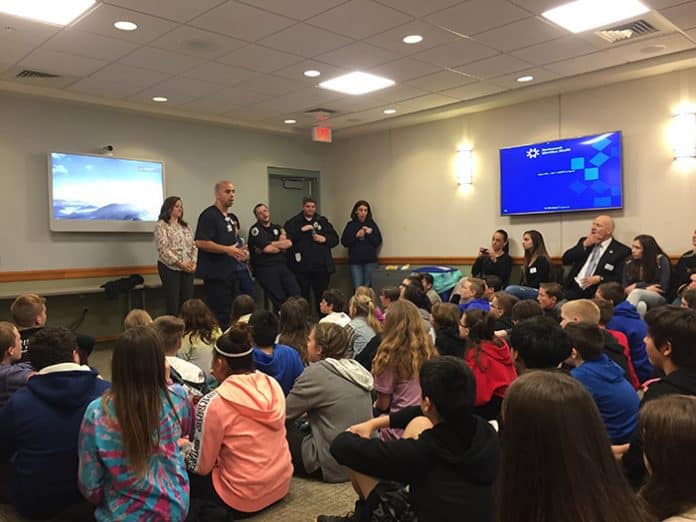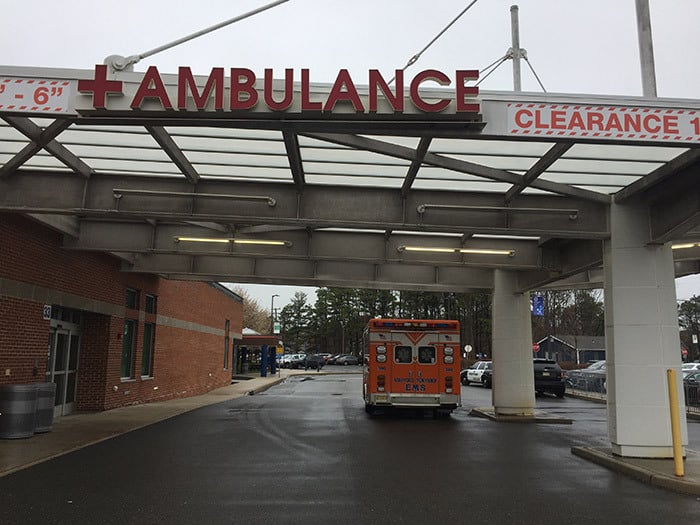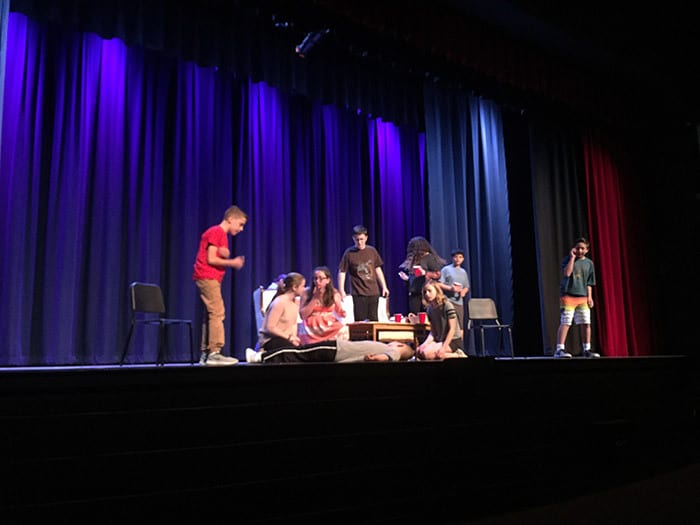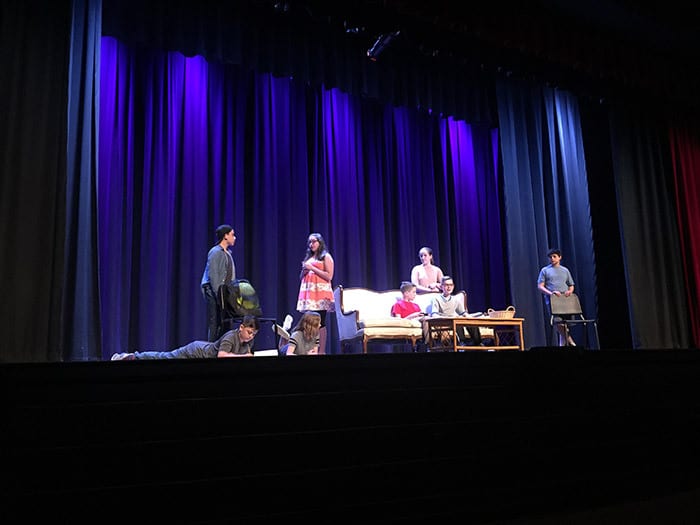
STAFFORD – How can a night spent working on a group history project evolve into a dangerous party scene? How do you know how to handle a situation that gets out of hand? What would you do if your friend overdosed right in front of you?
These are all questions that school administrators, Stafford Police officers, and medical professionals at Southern Ocean Medical Center asked the 6th grade students of the Stafford Intermediate School during Project Aware.
Project Aware is a two-part dramatic presentation meant to inform and educate 6th graders about the real-life dangers of drug and alcohol abuse.
Beginning at the Stafford Township Arts Center (STAC), a group of 6th grade drama students put on a short skit about “David,” a 13-year old boy who makes one too many mistakes at an impromptu house party with under-aged friends. The program ends at Southern Ocean Medical Center (SOMC), where students learn a lesson about what can happen to “David,” and even yourself, when you’re not careful.

Directed by Stafford’s theater teacher, Caitlin Gioe, the students perform a short sketch set at the scene of “John’s house.” When John invites a few friends over to work on a history group project, things get out of hand when alcohol comes into play.
The scene used projected images of Snapchats stating things like “At John’s house” and “no parents,” and Instagram posts showing off the party scene, connecting these innocent 13-year-olds to the outside world. It is when the senior students show up that the party gets an “upgrade” with pills, marijuana, and heroin.
When David passes out from alcohol and substance abuse during the party, real Stafford Police and EMS joined the 6th graders on stage, wheeling David off on a stretcher to SOMC, where Act 2 takes place.
The students are then bussed over in small groups to SOMC into a shut down section of the Emergency Department, where nurses also volunteered in the skit. David was frantically wheeled into a hospital bed, covered in realistic-looking fake vomit, while nurses shouted out medical orders to save his young life.
Students got to see the medicine in action as they defibrillated David, pushed drugs like epinephrine and Narcan, and performed chest compressions.

The program culminated in a conference room at SOMC where the volunteers working the program – officers, paramedics, nurses, and teachers – were able to talk with the students about what they witnessed and what they learned.
According to Ken Rodenbaugh, program coordinator for Project Aware and nurse at SOMC, 93 percent of the students believed what they saw of the sketch at the STAC and 95 percent believed it once at the hospital. Rodenbaugh said that, after seeing the program, 45 percent of kids admit that they could find themselves in this kind of situation in the future.
“Out of 560 kids, 98 percent of them say that it’ll help them make the right choice…99 percent said that this needs to be shown every year,” he said.
The program began in 2000 and ran every year until 2010, when the new principal at the time was unaware of the program, he added. The program didn’t run for three years, but was reinstated after students in their 20s approached administration with the idea to bring it back.
“They spoke about that it had an acute impact on them and asked to bring it back,” he said.

Rodenbaugh has a personal connection to the program that motivates his work volunteering for it each year. He admitted to the students that he too was an addict years ago.
Rodenbaugh asked of the students, “Who here wants to be an addict when they grow up?” to which no student raised a hand. To this, he replied, “Neither did I.” Rodenbaugh explained that he had an addiction to pills, but was fortunate enough to seek help and overcome his addiction to the point where he can now help others.
“My whole goal here is to make it personal, before you have a personal event occur,” said Rodenbaugh.
Many of the volunteers involved in the production shared their own personal experience with drug addiction with the students.
Paramedic Mike Tomasello, one of the EMS workers who carried David off stage on a stretcher and administered fake Narcan and epinephrine, explained that “for the majority of middle school and high school I had one really good best friend and… [years ago] I did everything you guys just saw me do today, on my best friend, who overdosed on heroin.”
A few got very emotional, like Stafford Police Officer Marisa Lawrence, who told a very personal story of the death of her sister due to heroin 17 years ago.
“When I was in high school I had a sister, she was my best friend, we grew up together…I woke up one morning and I found her in the bathroom and she was dead,” said Lawrence. “She had overdosed on heroin.”
Stafford Officer Christopher Fritz elaborated on the dangers of addiction, emphasizing a need for the recognition of typical behaviors associated with addicts so that they can get help.

“You need to recognize it and see it because the things that are going to happen, like we saw [today], are going to be happening a lot sooner than they did 30 years ago,” said Fritz.
The program, which used to focus more on alcohol abuse, has evolved to focus on heroin and opioid addiction over the last four years because of its prevalence today among younger generations.
Fritz also called the performance “extremely real,” referring to its use of social media as an escalator in substance abuse matters.
“I can’t stress enough the responsibility with social media…that [post] could be interpreted as an open invitation,” he added. One Snapchat could turn a group study into a huge party, just like at “John’s” house.
The performance struck many different chords, touching on not only alcohol and drug abuse, but also social responsibility.
A large part of its effectiveness is its realism, according to Rodenbaugh. “We want to keep them [the students] in it,” he added. From the moment that David passes out on stage to the moment that the program is finished at the hospital, the police and EMS perform their duties as realistically as possible to give the students an idea of what this might really look like.
According to Rodenbaugh, Stafford Intermediate School has been putting on this program for 19 years. This year will be Pinelands Regional School District’s first time participating in the program, planned for May 21. He noted that all three of Toms River’s Intermediate Schools will also have it next year. The ultimate goal is to spread its lasting effect throughout all of Ocean County, he said.






